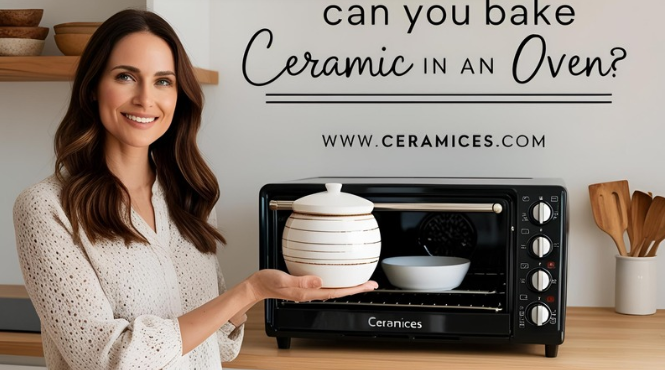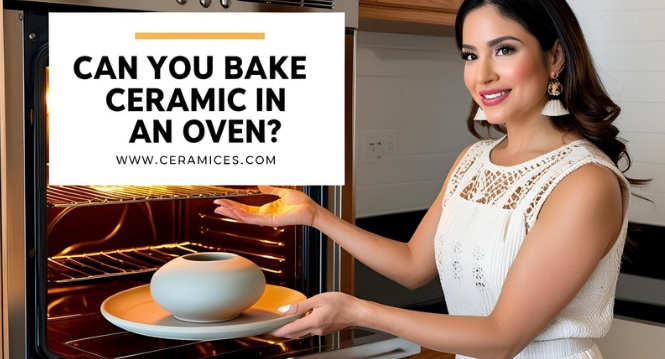Ceramics have been a cornerstone of human craftsmanship for millennia, used in everything from ancient pottery to modern kitchenware. But as DIY culture and home crafting surge, a common question arises: Can you bake ceramic in an oven? The answer isn’t straightforward—it depends on the type of ceramic, its purpose, and the baking process. In this guide, we’ll explore the nuances of baking ceramics in a standard oven, covering materials, safety, and techniques to help you achieve the best results.
Understanding Ceramics: Traditional vs. Oven-Bake Materials
What is Ceramic?
Ceramics are inorganic, non-metallic materials made by shaping clay and hardening it through heat. Traditional ceramics, like stoneware or porcelain, require high-temperature kiln firing (1,800°F to 2,400°F) to vitrify, making them durable and waterproof. However, not all ceramics are created equal. Let’s break down the two main categories:
- Traditional Ceramics
- Made from natural clay (earthenware, stoneware, porcelain).
- Requires kiln firing for permanence and strength.
- Used for dishes, tiles, and decorative items.
- Oven-Bake Clays (Polymer Clay)
- Synthetic materials like polymer clay (e.g., Sculpey, Fimo).
- Hardens at lower temperatures (200°F to 300°F) in a home oven.
- Ideal for crafts, jewelry, and small figurines.
Key Takeaway: Traditional ceramics cannot be fully vitrified in a standard oven, but oven-bake clays offer a DIY-friendly alternative.
Can You Bake Traditional Ceramic Clay in a Home Oven?

The Kiln vs. Oven Debate
Kilns are designed to reach extreme temperatures necessary for sintering clay particles and melting glazes. A home oven, however, typically maxes out at 500°F–550°F, far below the 1,800°F+ needed for true ceramic hardening.
- Air-Dry Clay: Some clays air-dry without baking, but they remain porous and fragile.
- Oven-Bake Polymer Clay: While called “clay,” polymer varieties contain PVC and plasticizers, curing at low heat without becoming true ceramic.
Why It Matters: Attempting to fire traditional clay in an oven will leave it brittle and unusable for functional items like mugs or bowls.
Baking Polymer Clay in an Oven: A Step-by-Step Guide
Polymer clay is the go-to for oven-based projects. Here’s how to bake it safely:
Materials Needed
- Polymer clay (e.g., Sculpey, Premo, Kato Polyclay).
- Oven thermometer (for accuracy).
- Baking tray lined with parchment paper.
- Optional: Gloves, acrylic roller, sculpting tools.
Instructions
- Condition the Clay: Knead until soft and pliable.
- Shape Your Design: Sculpt or mold as desired.
- Preheat the Oven: Set to 265°F–275°F (check clay packaging).
- Bake: Place on parchment-lined tray; bake 15–30 minutes per ¼-inch thickness.
- Cool: Let cool completely before handling.
Pro Tip: Overbaking can cause scorching, while underbaking leaves items brittle. Use an oven thermometer to avoid hot spots.
Is Store-Bought Ceramic Cookware Oven-Safe?

Many ceramic dishes, like casserole pots or baking plates, are labeled “oven-safe.” However, follow these guidelines:
- Check Manufacturer Instructions: Look for temperature limits (usually up to 500°F).
- Avoid Thermal Shock: Don’t transfer ceramic suddenly from fridge to oven.
- Glazed vs. Unglazed: Glazed ceramics handle heat better; unglazed may crack.
Common Oven-Safe Ceramics:
- Stoneware bakeware.
- Porcelain dishes.
- High-fire terracotta (unless cracked).
Risks of Baking Ceramics in an Oven
- Cracking/Shattering: Rapid temperature changes or exceeding heat limits.
- Toxic Fumes: Polymer clays release fumes if overheated—ventilate well.
- Glaze Damage: Store-bought glazes may degrade at high temps.
Safety Tips:
- Never use microwave-only ceramics in a conventional oven.
- Avoid antique or cracked ceramics.
FAQs: Baking Ceramics in an Oven
1. Can I fire pottery in a home oven?
No. Traditional ceramics require kilns. Ovens lack the necessary temperatures.
2. What’s the difference between polymer clay and ceramic clay?
Polymer clay is PVC-based and cures at low temps; ceramic clay is natural and needs kiln firing.
3. Can I glaze ceramics without a kiln?
Traditional glazes need kilns, but alternatives like acrylic paints or resin sealants work for polymer clay.
4. Why did my ceramic crack in the oven?
Thermal shock from sudden temperature changes or exceeding the item’s heat tolerance.
5. Is oven-bake clay food-safe?
Once cured, polymer clay is inert but porous. Avoid using it for food surfaces.
6. Can I bake painted ceramics?
Only if the paint is heat-resistant. Acrylics may burn; use oven-safe enamel paints.
7. How do I know if my dish is oven-safe?
Check for an “oven-safe” label or manufacturer’s guidelines.
8. Can I bake air-dry clay in an oven?
No—it’s designed to dry at room temperature. Baking may cause warping.
9. What’s the best clay for oven crafts?
Polymer clay (e.g., Sculpey III) is user-friendly and comes in vibrant colors.
10. Can I reuse oven-baked clay?
No—once cured, polymer clay can’t be reworked.
Conclusion: When to Use an Oven for Ceramics
While traditional ceramics demand a kiln, oven-bake polymer clays offer a versatile alternative for crafters. Store-bought ceramic cookware can often withstand oven use, but always verify temperature limits and avoid thermal shock. For functional pottery or glazed items, invest in professional kiln services.
Final Tips:
- Use polymer clay for DIY jewelry, ornaments, and decor.
- Reserve the oven for heating, not firing, traditional ceramics.
- Prioritize safety by monitoring temperatures and ventilation.
By understanding the limits and possibilities of your materials, you can confidently create beautiful, oven-baked ceramic-inspired projects at home.
Read more
1 Can Ceramic Go in the Oven? A Guide to Using Ceramic in the Oven
2 Can I Use Ceramic Tile Caulk in a Shower? A Comprehensive Guide